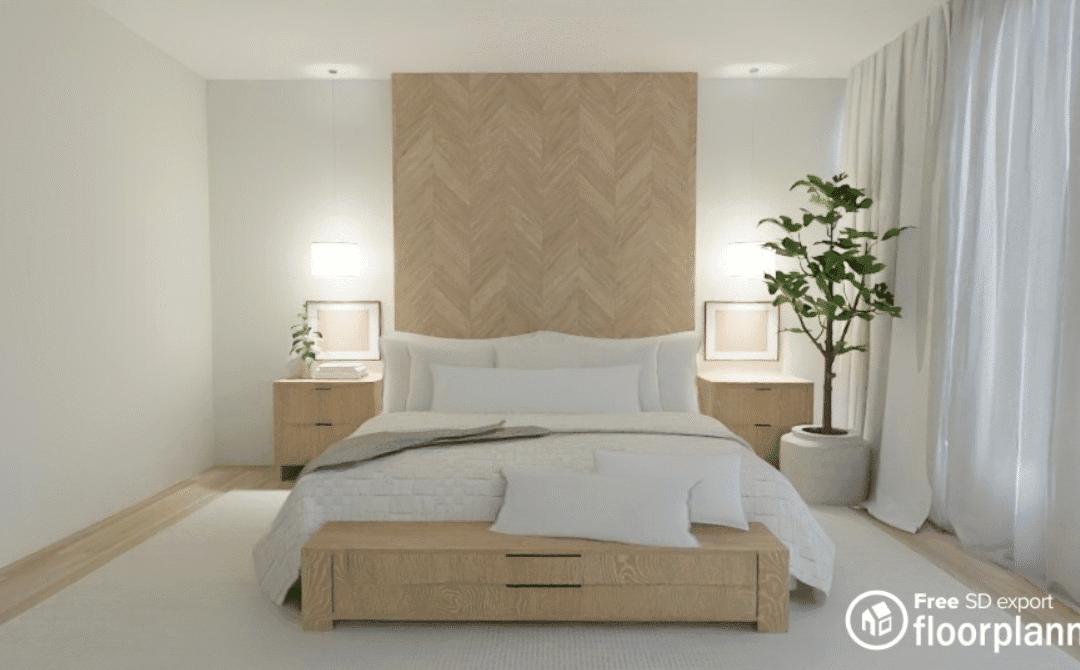Written with insights from our Interior Design Intern, exploring how timeless design can feel both innovative and grounded in nature.
Mid-century modern design is one of the most recognizable and enduring styles in the world of interiors. It began in mid-twentieth-century post-war America, when people sought something new after years of ornate and heavy decor. The result was a movement that embraced simplicity, practicality, and innovation.
This style, while born decades ago, still holds strong today because of its balance between comfort and modernity. It encourages open spaces, natural light, and a seamless connection between form and function.
Our intern’s study of this style takes a thoughtful look at how homeowners can bring mid-century modern design into their own spaces with warmth and character, while staying true to the principles that made it iconic.
The Origins of Mid-Century Modern Design
Mid-century modern design emerged during a period of rapid technological advancement and optimism. Designers began experimenting with new materials like fiberglass, steel, plywood, cement, and plastic laminates. These materials made furniture and home elements lighter, more durable, and more accessible.
At the same time, architects and homeowners wanted to maintain a connection to the natural world. This led to the use of wood, stone, and brick alongside these new innovations. Many homes featured large glass windows, natural wood paneling, and exposed beams. These elements allowed natural light to fill the space and blurred the line between indoors and outdoors.
This connection to nature remains one of the defining traits of mid-century modern interiors. It is a look that feels organic, functional, and timeless.
The Mid-Century Color Palette
When this design style first became popular, two color directions developed. The first featured bright pastels such as turquoise, lime, pink, light blue, and yellow. The second relied on earthy tones like olive, khaki, burnt orange, mustard yellow, and brown.
Today, most designers use these colors in balance, pairing neutrals with brighter accents to create interest. For example, a living room with white walls and natural wood tones might include a pop of deep blue in an accent chair or a mustard-toned throw pillow.
Fabrics play an equally important role. Vinyl, polyester, wool, and velvet were all popular during the mid-century era. These materials help express the bold yet approachable nature of the style.
Form and Function in Harmony
At the heart of mid-century modern design are two simple ideas: form and function. Spaces are open and uncluttered. Furniture pieces are reduced to their most essential shapes, emphasizing practicality without sacrificing comfort.
Curved lines, organic forms, and clean geometry all work together. You might see a round dining table beside a rectangular window frame or an angular chair softened by a woven rug. Every piece has a purpose, yet the overall look remains graceful and balanced.
This concept fits perfectly with the way many homeowners in the greater Atlanta area live today. People want rooms that feel beautiful but also work well for their daily routines. Mid-century design makes that possible.
The Mood Board

Our intern created a mood board that highlights the key features of mid-century modern design. It combines warm color, architectural detail, and natural texture to create a space that feels inviting and structured.
Soft cream walls act as a neutral backdrop for earthy hues such as burnt orange, mossy green, terra cotta, and deep blue. These colors work beautifully with dark wood flooring and other natural materials. The use of brick, wood ceilings, and floor-to-ceiling windows demonstrates the connection to nature that defines the style.
In terms of shape, the mood board balances organic and geometric forms. Lighting fixtures have gentle curves, while shelving, artwork, and ceiling details bring in sharper angles. Furniture pieces made from natural wood and cozy materials like wool and velvet add warmth and functionality. The design feels stylish, practical, and timeless.
The 3D Kitchen Design

In her 3D design study, our intern explored how mid-century modern principles can guide a kitchen remodel. The space uses clean lines, flat surfaces, and natural materials to create a sleek yet welcoming atmosphere.
Flat-panel wood cabinetry and smooth countertops provide a crisp and uncluttered look. Open shelving allows easy access to everyday items, while built-in cabinets hide clutter and maintain simplicity. This combination perfectly represents the mid-century philosophy of balancing form and function.
Natural textures, such as wood grain, a woven rug, and small potted plants, bring the outdoors inside. These details add character without overwhelming the space. Pendant lights with curved shapes provide contrast to the straight lines of the cabinetry and countertops. The result is a room that feels open, practical, and full of personality.
Why Mid-Century Modern Design Works for Today’s Homes
Even decades after its introduction, mid-century modern design remains relevant because it adapts to modern lifestyles. It offers beauty through simplicity, promotes natural light, and embraces open layouts that encourage connection.
For homeowners looking to remodel in Georgia, this design approach is ideal. It pairs easily with existing architecture, works with both compact and large spaces, and supports sustainable choices through its use of long-lasting materials.
At Design and Remodel Brothers, our team specializes in creating interiors that merge timeless style with modern function. Whether you want to bring mid-century elegance to a kitchen, a bathroom, or an entire home, we guide you from concept to completion with professional design, quality materials, and exceptional craftsmanship.
Bringing Your Vision to Life
Mid-century modern design is more than a trend. It is a philosophy that values comfort, practicality, and connection. By embracing its principles, homeowners can achieve interiors that are simple yet sophisticated, warm yet refined.
If you are considering a remodel and love the balance of vintage charm and modern clarity, contact Design and Remodel Brothers today. Our design experts can help you bring mid-century inspiration into your home, creating a space that feels timeless, functional, and uniquely yours.




